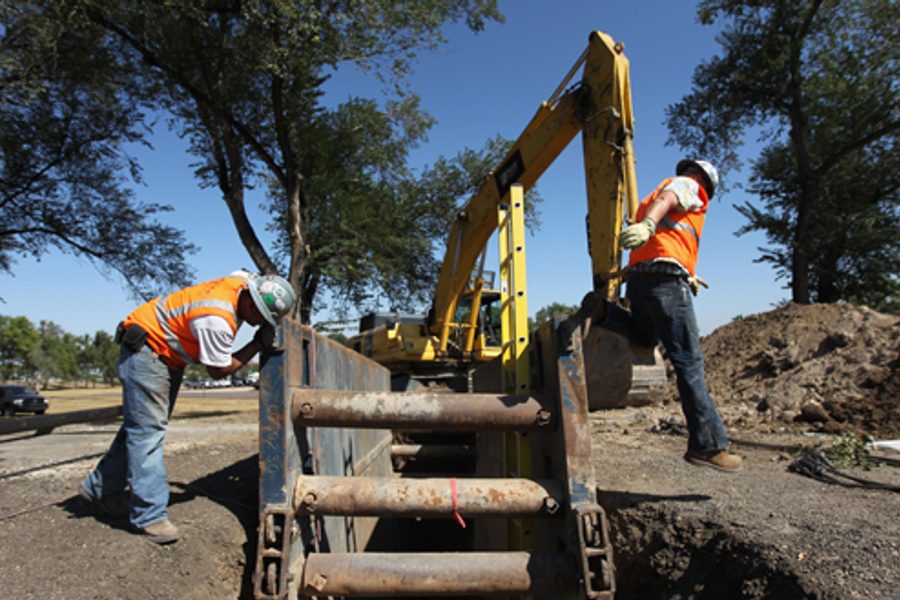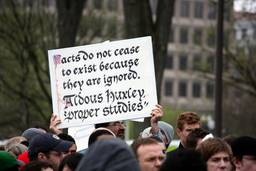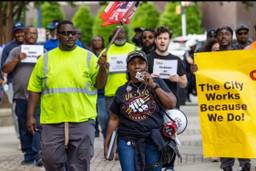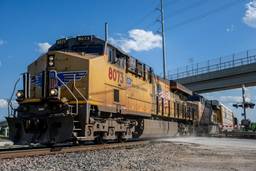
Even though Democratic chances in some Senate races are improving, the grim likelihood for Democrats of a GOP House victory, with as many as 99 seats in play, adds a quixotic element to this week’s call by the labor-backed Apollo Alliance for $40 billion a year in new transportation spending and manufacturing.
AFL-CIO President Richard Trumka declared Wednesday,
Our economy needs to be rebuilt, and working Americans need jobs – both of which can be accomplished by modernizing and shoring up our nation’s roads, bridges, mass transportation and advanced vehicles. The AFL-CIO applauds the Apollo Alliance Clean Transportation Manufacturing Action Plan (TMAP). TMAP will transform the legacy of our past into a practical vision and plan for the 21st century.
The expansive TMAP plan goes even further than President Obama’s similar call in recent weeks for a $50 billion infrastructure bank funded by ending tax loopholes for energy companies. Don’t hold your breath waiting for passage of that bill, either.
Speaking in the wake of an official unemployment rate of 9.6 percent, and GOP smears that the original stimulus failed completely, Obama told reporters, “Nearly one in five construction workers is still unemployed and needs a job. And that makes absolutely no sense when so much of America needs rebuilding.There’s no reason why we can’t do this. … All we need is the political will.”
With passage of such measures essentially nil this year, the longed-for political will is likely to be in far shorter supply in next year’s Congress. In trade publications, construction industry leaders and lobbyists are more frank about the poor prospects for the road and transportation spending they’d like to see.
The Engineering News-Record reported about the dimming chances for even scaled-backed, obscure legislation already moving through Congress, let alone the ambitious wish lists of President Obama and the experts convened by the Apollo Allliance:
What already was shaping up as a difficult year for the struggling construction industry promises to be even more difficult, as the likelihood of passing strong infrastructure spending measures would be even more remote.
Those bills include the delayed reauthorization of the Safe, Accountable, Flexible, Efficient Transportation Equity Act: a Legacy for Users, an overdue aviation bill and fiscal 2012 appropriations.
John Doyle, special counsel with law and lobbying firm Jones Walker LLP, says, “Next year on the spending side is going to be the toughest year that any of us have seen in a long, long time.”
Jay Hansen, National Asphalt Pavement Association (NAPA) vice president for government affairs, says, “There’s no doubt one of the top priorities of the next Congress will be to reduce the deficit.” Some budget-cutting pressure will come from President Obama, who in February proposed freezing “non-security” discretionary spending. As Republicans’ numbers grow in Congress next year, their already loud calls to slash budgets will intensify.
Cathy Connor, Parsons Brinckerhoff senior vice president for government affairs, cites the GOP’s September “Pledge to America.” The strategy “isn’t gaining as much traction and support as the [Republicans’] 1994 Contract With America,” she says, but “they lay out what their priorities are, and I think a number of those priorities are potentially detrimental to robust infrastructure funding.” …
Connor says the pledge also would rescind American Recovery and Reinvestment Act funds not yet disbursed. That could harm the Transportation Investment Generating Economic Recovery (TIGER) and high-speed-rail programs.
In contrast, the “Make It In America” call for action by the Apollo Alliance seems to be operating in a nearly mythical political universe that bears little resemblance to the changing political realities:
Based on input from the task force, we call for a comprehensive strategy to boost domestic transit and freight manufacturing that starts with increasing current federal investment to $30 billion per year for public transit and $10 billion per year for intercity and high-speed rail.
The $40 billion annual investments as proposed by TMAP will create 3.7 million direct and indirect jobs - 600,000 alone in the manufacturing sector over the next six years, the likely duration of a reauthorized transportation bill. By making these investments, we can get our economy back on track while doubling ridership over the next two decades, and building out a comprehensive intercity and high-speed rail system…
Of the more than 600,000 jobs that would be created in the manufacturing sector, many will be in the production of advanced buses, rail cars, cleaner freight movement technologies and component parts.
All that makes sense, but despite a historic tradition of biparistan cooperation on transporation and infrastructure spending, such agreements in a polarized Washington seem more unlikely than at any time in recent memory.
Indeed, as the Washington Post reported when President Obama first announced his infrastructure bank proposal at a Labor Day rally in September:
After months of campaigning on the theme that the president’s $787 billion stimulus package was wasteful, Republicans sought Monday to tag the new plan with the stimulus label. The Republican National Committee called it “stimulus déjà vu,” and Representative Eric Cantor of Virginia, the House Republican whip, characterized it as “yet another government stimulus effort.”
Will there be a more cooperative spirit next year if the House, reshaped by the Tea Party movement that toppled GOP moderates in the primaries, is run by an even more conservative, obstructionist House GOP — and the Democratic margin in the Senate is even slimmer than now? That’s a recipe for even more gridlock.
Indeed, public support for political leaders cooperating with each other across party lines is slipping while there’s growing backing for leaders who “stick by their positions,” according to a new ABC News poll.

I hope you found this article important. Before you leave, I want to ask you to consider supporting our work with a donation. In These Times needs readers like you to help sustain our mission. We don’t depend on—or want—corporate advertising or deep-pocketed billionaires to fund our journalism. We’re supported by you, the reader, so we can focus on covering the issues that matter most to the progressive movement without fear or compromise.
Our work isn’t hidden behind a paywall because of people like you who support our journalism. We want to keep it that way. If you value the work we do and the movements we cover, please consider donating to In These Times.





